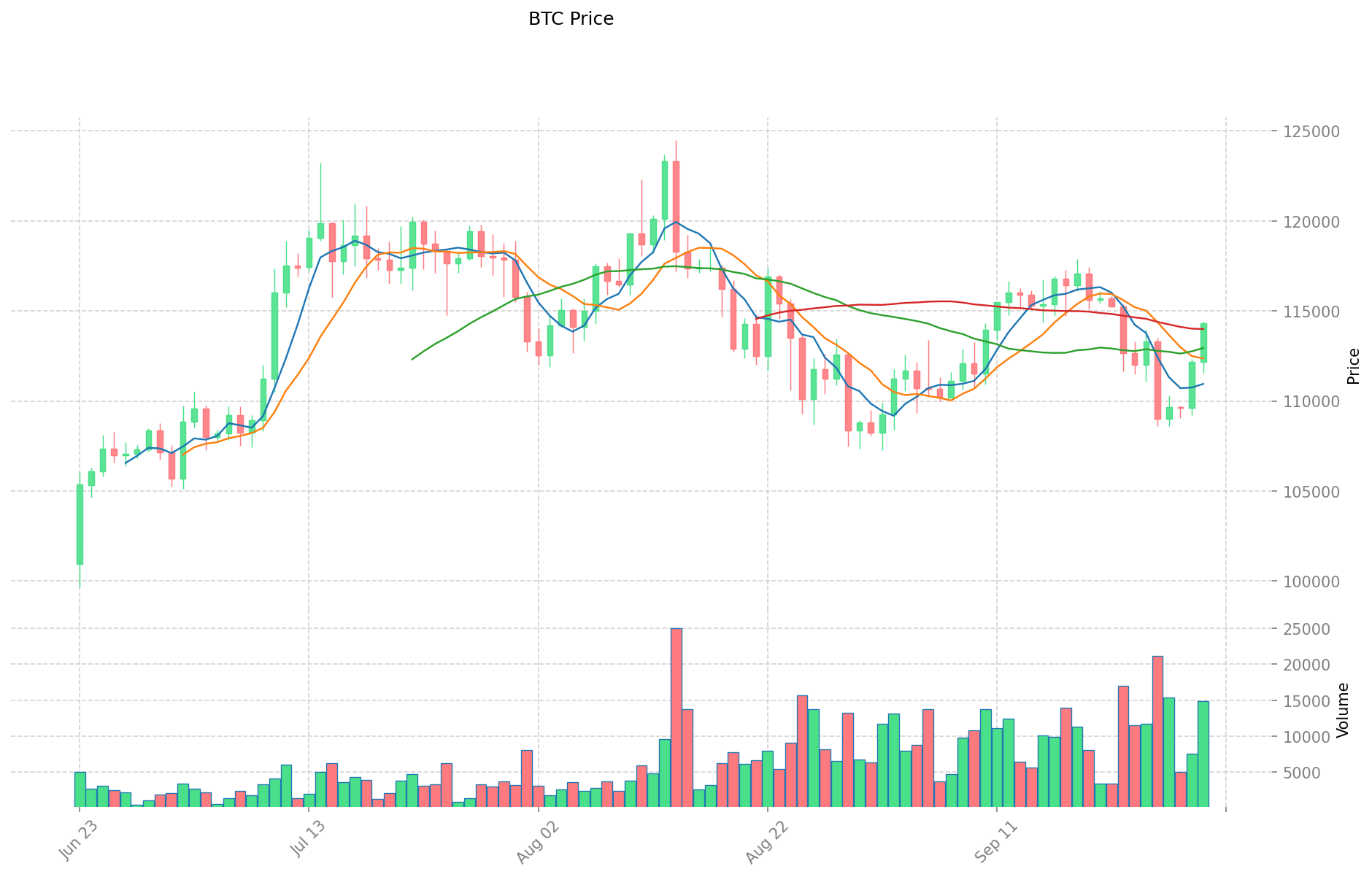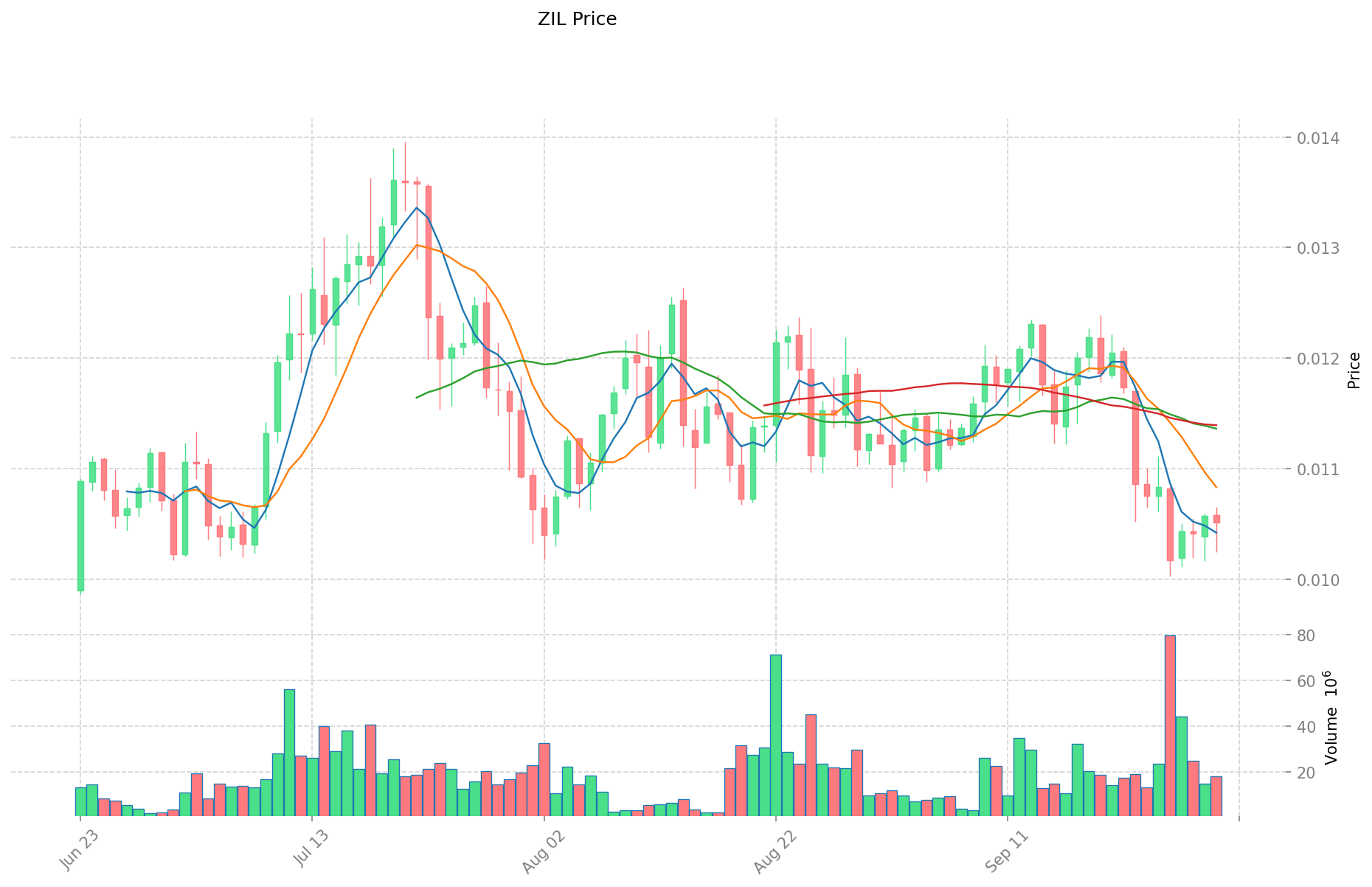BTC vs ZIL: Comparing Bitcoin's Store of Value Proposition Against Zilliqa's High-Performance Blockchain Solution
Introduction: BTC vs ZIL Investment Comparison
In the cryptocurrency market, Bitcoin vs Zilliqa comparison has always been a topic that investors cannot avoid. The two not only have significant differences in market cap ranking, application scenarios, and price performance, but also represent different positioning of crypto assets.
Zilliqa (ZIL): Since its launch in 2018, it has gained market recognition for its high-throughput public blockchain platform.
Bitcoin (BTC): Since its inception in 2008, it has been hailed as "digital gold" and is one of the cryptocurrencies with the highest global trading volume and market capitalization.
This article will comprehensively analyze the investment value comparison between Zilliqa vs Bitcoin, focusing on historical price trends, supply mechanisms, institutional adoption, technical ecosystems, and future predictions, and attempt to answer the question that investors are most concerned about:
"Which is the better buy right now?" Here is the report in English as requested:
I. Price History Comparison and Current Market Status
Bitcoin (BTC) and Zilliqa (ZIL) Historical Price Trends
- 2021: Bitcoin reached an all-time high of $68,789 due to increased institutional adoption.
- 2021: Zilliqa hit its peak price of $0.255376 in May, boosted by growing interest in layer-1 platforms.
- Comparative analysis: During the 2022 bear market, Bitcoin fell from $47,000 to $15,000, while Zilliqa declined from $0.12 to $0.02.
Current Market Situation (2025-09-30)
- Bitcoin current price: $112,838.90
- Zilliqa current price: $0.010221
- 24-hour trading volume: $1,810,887,128 (BTC) vs $222,968 (ZIL)
- Market Sentiment Index (Fear & Greed Index): 50 (Neutral)
Click to view real-time prices:
- Check BTC current price Market Price
- Check ZIL current price Market Price


II. Core Factors Influencing BTC vs ZIL Investment Value
Supply Mechanism Comparison (Tokenomics)
- Bitcoin: Fixed total supply permanently capped at 21 million coins, creating absolute scarcity as a core value proposition. The "halving" mechanism reduces new bitcoin issuance by half approximately every four years.
- ZIL: Utility token with supply determined by market adoption and network usage, lacking the same scarcity model as Bitcoin.
- 📌 Historical Pattern: Bitcoin's halving cycles have historically preceded major price rallies, with supply reduction creating upward price pressure when demand remains constant or increases.
Institutional Adoption and Market Applications
- Institutional Holdings: Bitcoin has gained significant institutional adoption, with major ETF approvals in 2024 attracting billions in investments within months.
- Enterprise Adoption: Bitcoin is increasingly integrated into corporate treasuries and payment systems, while ZIL's adoption remains primarily focused on its specific blockchain use cases.
- Regulatory Stance: Bitcoin has gained regulatory clarity in many jurisdictions, with some countries like the United States even considering it for strategic reserves, while smaller cryptocurrencies face greater regulatory uncertainty.
Technical Development and Ecosystem Building
- Bitcoin Technical Upgrades: Focus on security, scalability solutions like Lightning Network, and maintaining the network's robustness as digital gold.
- ZIL Technical Development: Emphasizes utility within its specific blockchain ecosystem and application-specific functionality.
- Ecosystem Comparison: Bitcoin has developed a robust DeFi ecosystem with users able to collateralize BTC for yield generation, while ZIL's ecosystem development focuses on its own blockchain applications.
Macroeconomic Factors and Market Cycles
- Performance During Inflation: Bitcoin has demonstrated stronger anti-inflationary properties due to its fixed supply cap and growing reputation as "digital gold."
- Monetary Policy Impact: Interest rates and USD strength significantly affect both cryptocurrencies, with Bitcoin typically showing more correlation to broader market liquidity conditions.
- Geopolitical Factors: Bitcoin benefits from increased cross-border transaction demand during geopolitical instability, functioning as a neutral monetary network independent of any single country's control.
III. 2025-2030 Price Prediction: BTC vs ZIL
Short-term Prediction (2025)
- BTC: Conservative $60,990 - $112,945 | Optimistic $112,945 - $163,771
- ZIL: Conservative $0.00931 - $0.01023 | Optimistic $0.01023 - $0.01105
Mid-term Prediction (2027)
- BTC may enter a bullish phase, with prices expected between $125,249 and $175,348
- ZIL may enter a growth phase, with prices expected between $0.00928 and $0.01316
- Key drivers: Institutional investment inflows, ETF developments, ecosystem growth
Long-term Prediction (2030)
- BTC: Base scenario $212,358 - $244,090 | Optimistic scenario $244,090 - $297,790
- ZIL: Base scenario $0.00738 - $0.01392 | Optimistic scenario $0.01392 - $0.01852
Disclaimer: This analysis is based on historical data and market projections. Cryptocurrency markets are highly volatile and unpredictable. This information should not be considered as financial advice. Always conduct your own research before making investment decisions.
BTC:
| 年份 | 预测最高价 | 预测平均价格 | 预测最低价 | 涨跌幅 |
|---|---|---|---|---|
| 2025 | 163771.265 | 112945.7 | 60990.678 | 0 |
| 2026 | 156345.085225 | 138358.4825 | 83015.0895 | 22 |
| 2027 | 175348.622796375 | 147351.7838625 | 125249.016283125 | 30 |
| 2028 | 238798.3009275675 | 161350.2033294375 | 125853.15859696125 | 42 |
| 2029 | 288106.9230650436 | 200074.2521285025 | 110040.838670676375 | 77 |
| 2030 | 297790.516868063121 | 244090.58759677305 | 212358.8112091925535 | 116 |
ZIL:
| 年份 | 预测最高价 | 预测平均价格 | 预测最低价 | 涨跌幅 |
|---|---|---|---|---|
| 2025 | 0.01105056 | 0.010232 | 0.00931112 | 0 |
| 2026 | 0.0128759488 | 0.01064128 | 0.0060655296 | 4 |
| 2027 | 0.013169648128 | 0.0117586144 | 0.009289305376 | 15 |
| 2028 | 0.01470767489152 | 0.012464131264 | 0.00772776138368 | 21 |
| 2029 | 0.014265198231648 | 0.01358590307776 | 0.0078798237851 | 32 |
| 2030 | 0.018520982370756 | 0.013925550654704 | 0.007380541846993 | 36 |
IV. Investment Strategy Comparison: Bitcoin vs Zilliqa
Long-term vs Short-term Investment Strategies
- Bitcoin: Suitable for investors seeking long-term store of value and inflation hedge
- Zilliqa: Suitable for investors interested in blockchain technology and ecosystem growth potential
Risk Management and Asset Allocation
- Conservative investors: Bitcoin: 80% vs Zilliqa: 20%
- Aggressive investors: Bitcoin: 60% vs Zilliqa: 40%
- Hedging tools: Stablecoin allocation, options, cross-currency portfolios
V. Potential Risk Comparison
Market Risks
- Bitcoin: High volatility, susceptibility to macroeconomic factors
- Zilliqa: Lower liquidity, higher susceptibility to market sentiment shifts
Technical Risks
- Bitcoin: Scalability challenges, energy consumption concerns
- Zilliqa: Network stability, potential smart contract vulnerabilities
Regulatory Risks
- Global regulatory policies may have differing impacts on both assets, with Bitcoin potentially facing more scrutiny due to its larger market presence
VI. Conclusion: Which Is the Better Buy?
📌 Investment Value Summary:
- Bitcoin advantages: Strong brand recognition, institutional adoption, scarcity model
- Zilliqa advantages: Potential for higher growth, focus on specific blockchain use cases
✅ Investment Advice:
- Novice investors: Consider a Bitcoin-heavy portfolio with a small allocation to Zilliqa
- Experienced investors: Balanced approach with higher risk tolerance for Zilliqa
- Institutional investors: Focus on Bitcoin for regulatory clarity and liquidity
⚠️ Risk Warning: Cryptocurrency markets are highly volatile. This article does not constitute investment advice. None
VII. FAQ
Q1: What are the main differences between Bitcoin and Zilliqa? Answer: Bitcoin is considered "digital gold" with a fixed supply cap, while Zilliqa is a utility token for its blockchain platform. Bitcoin has stronger institutional adoption and brand recognition, while Zilliqa focuses on specific blockchain use cases and ecosystem development.
Q2: Which cryptocurrency is better for long-term investment? Answer: Bitcoin is generally considered better for long-term investment due to its established market position, institutional adoption, and scarcity model. However, the choice depends on individual investment goals and risk tolerance.
Q3: How do the supply mechanisms of Bitcoin and Zilliqa differ? Answer: Bitcoin has a fixed total supply of 21 million coins with halving events reducing new issuance. Zilliqa's supply is determined by market adoption and network usage, lacking the same scarcity model as Bitcoin.
Q4: What are the key factors influencing the price of Bitcoin and Zilliqa? Answer: Key factors include institutional adoption, regulatory developments, technical upgrades, macroeconomic conditions, and overall market sentiment. Bitcoin is more influenced by global economic factors, while Zilliqa is more affected by its specific ecosystem growth.
Q5: How do the risk profiles of Bitcoin and Zilliqa compare? Answer: Bitcoin generally has lower risk due to its established market position and regulatory clarity but still experiences high volatility. Zilliqa may have higher potential returns but also carries higher risks due to lower liquidity and greater susceptibility to market sentiment shifts.
Q6: What are the predicted price ranges for Bitcoin and Zilliqa by 2030? Answer: According to the provided predictions, Bitcoin's price range for 2030 is estimated at $212,358 - $297,790, while Zilliqa's range is estimated at $0.00738 - $0.01852. However, these predictions are speculative and subject to market conditions.
Q7: How should investors allocate their portfolio between Bitcoin and Zilliqa? Answer: Conservative investors might consider allocating 80% to Bitcoin and 20% to Zilliqa, while more aggressive investors might opt for a 60% Bitcoin and 40% Zilliqa split. The exact allocation should be based on individual risk tolerance and investment goals.
Share
Content